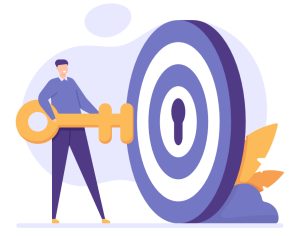Audits and certification services have been long established, respected, and mostly unchanged for decades now. Historically many auditors and most auditees resisted remote audit practices as it was perceived that not auditing in person was an inferior approach. While some audits had, in the past been done remotely, this practice was however far from mainstream pre-COVID. The pandemic has accelerated the need for certification (and accreditation) bodies to adopt remote auditing practices which has opened up opportunities for innovation in the space as a result.
Remote assurance is continuing to develop, forming a critical component to a blended audit approach of the future. Connectivity, video conferencing and other connected devices have largely substantiated the feasibility of the remote/hybrid approach with little or no loss of audit effectiveness. Additionally, there is already a growing demand for instant access to data as organizations want to take a proactive approach to audit that makes best use of the ever-growing wealth of data available.
As hybrid working becomes the norm, the need to embrace technology and embed audit tools as part of transformation strategies is critical. When empowered with an auditor-centric piece of software such as BSI Connect Plus, organizations have infinitely better visibility and analysis over changes over time, understanding performance of business units and functions, as well as their supply chains. Going even further, the way an organization’s management system operates can shift with technology as an enabler.
Types of audits vary depending on the organization, audit purpose and audit team skillset. Often, they do not even use the term audit, but anything involving a form of assessment, test, inspection or examination could be classified as an audit.
Reviewing previous audits, inspections, findings and actions (preventive and corrective) is a key activity for both auditor and auditee. Using a single application for all stakeholders allows for quick retrieval of historical information and facilitates views of the data that other approaches cannot achieve.
Consider maximizing available resources required for an audit by providing early access to audit plans and where audit scope is broad, one should consider doing as much pre-work as collaboratively as possible. With software, it is entirely possible to not only plan but inform those that you intend to audit as to the details; maximising the use of time together. In order to do this effectively, historical knowledge and an understanding of risks and opportunities regarding the audit, inspection etc. are of crucial importance.
As the audit plan is built, the decision to employ checklists should be made. A checklist, like the introduction and scope are known planning documents and checklists and forms for findings are termed work documents. Where software is used for these elements, the terms seem anachronistic, but the elements all remain in the process and no fidelity is lost.
The audit component documents manifest as related records with all the traditional document management requirements done automatically, preserved centrally and ready for use on a desktop computer, tablet, phone, etc. The main function of the checklist is to keep the objectives of an audit clear. It can reduce any risk of auditor bias, illustrate that there is a plan behind the audit and helps maintain the audit pace and continuity.
Re-using a common format, made easy with software, that does all the important indexing, dates, personnel, scope (included and not covered), objectives, summary, any uncertainties and nonconformity reports is a long-employed approach, especially in the case of certification bodies. The consistency of format and information capture does not alter the application of an auditor’s professional judgement, using standard formats from planning to the final report reduces non-value add administration time and maximises an auditor’s time for assessment.
Mobility is here to stay; it is the age in which we have seen the explosion of on-the-go technology and we will see even more value from mobile technology as connectivity and synchronising challenges become a distant memory.
BSI Connect Plus makes it simple to digitise audits and inspections at scale, from anywhere, unifying your information in the cloud for the most effective level of visibility, control and greater resilience. Guidance is available on demand in-situ and capturing objective evidence is very slick. From a basic note to a multi-faceted evidence package, the mobile device’s strengths meet the needs of the auditor or inspector. Take a picture, annotate the picture, record an interview, video a step in a process and much more.
The future of audit effectiveness is reliant on organizations taking the leap to adopt the right platforms today. Whilst not everyone will be at a level to take advantage of artificial intelligence and predictive analytics, all organizations can make a start. It is important to understand your digitization priorities and ensure audits and compliance are central to that strategy.
This article comes courtesy of BSI, the global certification company and UK’s National Standards Body. BSI offers software to help with the issues identified – BSI Connect.
“
Share via:








































